Cumberland County Stones
- Thread starter manumuskin
- Start date
You are using an out of date browser. It may not display this or other websites correctly.
You should upgrade or use an alternative browser.
You should upgrade or use an alternative browser.
It was a quick trip.Just to plant the stone and then back home.I wasn't anywhere illegal so no need for stealth

went out to gather some more stones today.One I could not get to since it appeared to be right on someones fence corner plainly visible from their back window fifty feet away and I would have had to approach through thick stuff to get to it and then probably anwered questions why i was photographing the house from the back fence in the woods so I left this one alone if it was even there but all the others I found and one I didn't expect to hence I name it the "Unexpected Stone" sadly I accicently deleted the only pic I took of the Unexpected stone because I was deleteing two others on the disc that did not turn out and I still must of had that pic highlighted and since It was on the card but not yet transferred to the computer it never hit the recycle bin but just vanished into thin cyber air.When I went back to get it it was not there and I realized what i did. A valid arguement for always taking more then one pic.The Unexpected stone was a small lump of grey buried in mud so your not missing anything.It was on the same line as the stone I was actually looking for and when I pulled up to park on the road shoulder I looked into the woods and seen new flagging with Posted signs on the tree facing what I knew was private property and the other side being state.After stopping at this little "unexpected" stone I proceeded about 400 ft to the stone I had plotted.I plotted the unexpected stone as well but no stone was mentioned on the deed for this point.In any case here is waht i found 400 ft away at the next corner.
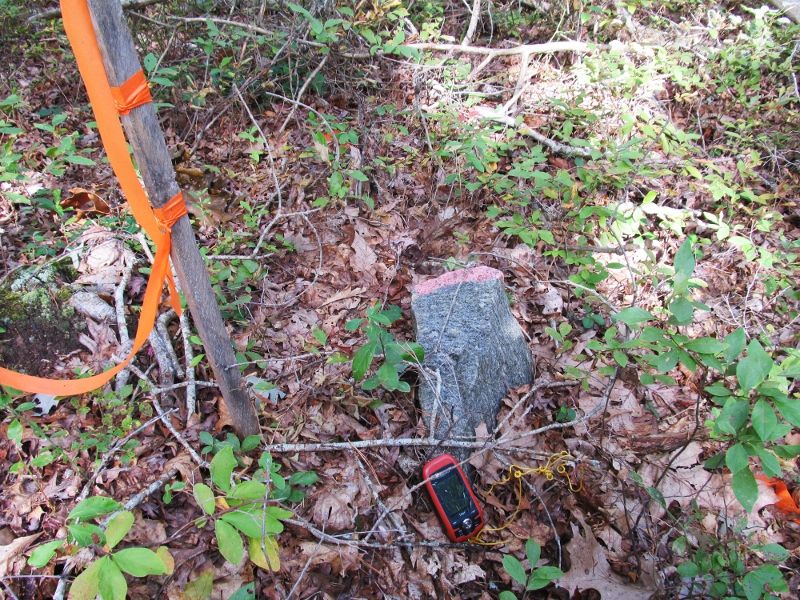
I thne went to check out another stone in the area knowing the short way in is across private property.I was hopin the woods would be open and they wildly exceeded my hopes.They were so open I could see 200 yeards no problem except the problem was I would be tresspassing and was easily visible from a house though not the property owner.Alas I had wore blue jeans and a light grey shirt.I felt nekked without my camo and told myself I"m 51 years old and need to start obeying the law especially since I can't run very fast or far anymore.I will tackle this stone later legally but will need to bushwack more then a mile to get to it legally.I have laready found stones where I"ll have to wack through and their very nice woods indeed so it should be fun.I then left Cumberland County and headed for Cape May,whistling an old Al Alberts song along the way.I headed for a stone I knew was very close to a road and also close to someones house.I had Google Sightseed along the highway and could see on Google the very sign I knew this stone had to be at the base of.It also appeared to be far enough away from the house that I could hopefully avoid interrogation and possible torture.I pulled over and could look back and see the sign in reality just like I did in cyber space.I stepped out of the truck and then I could see over a blocking briar and there was this beauty.Fully hip high so I named it the "Hip High" stone
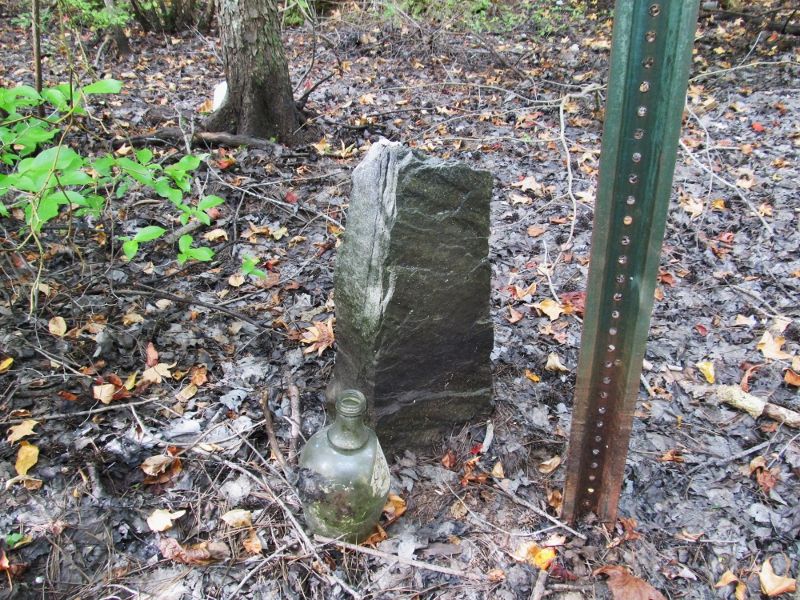
There is another stone along this line listed on the deed as a LARGE stone but it is over a mile through the swamp.I could get to it easily from the other side but folks tend to get irritated when you walk through their yards so this will be another long hike.Maybe I"ll do both long hikes the same day.In any case I then headed for the stone I could not get to already related next to someones back yard fence.I knew it was close but not that close or I wouldn't have bothered.I then crossed the street where I had parked and walked through a flock of very disinterested turkeys,they barely moved to let me through.I then found this baby after looking around for maybe a minute.The NC sign on the big tree it's next to helped.

I then headed much further south.I was expecting to see cypress knees and spanish moss,I was almost in Cape May itself.I headed into a small but gorgeous patch of NC woods and 700 ft back in along the back side of the property where I found no signs,no ribbon or no clues at all which was really weird for a property that was supposedly surveyed a couple months ago.First thing I found was this big mushroom,awaiting ID by my mushroom eating friend but I do believe this to be edible,I think it's Hen of the Wo0ds but not sure.I attached the photo since i didn't photobucket this one. I then turned around to start looking for the stone and it was ten feet behind me,spot on with my coord.Here are two pics of it.Nice sqare one.The Mr. Square " stone
Top View
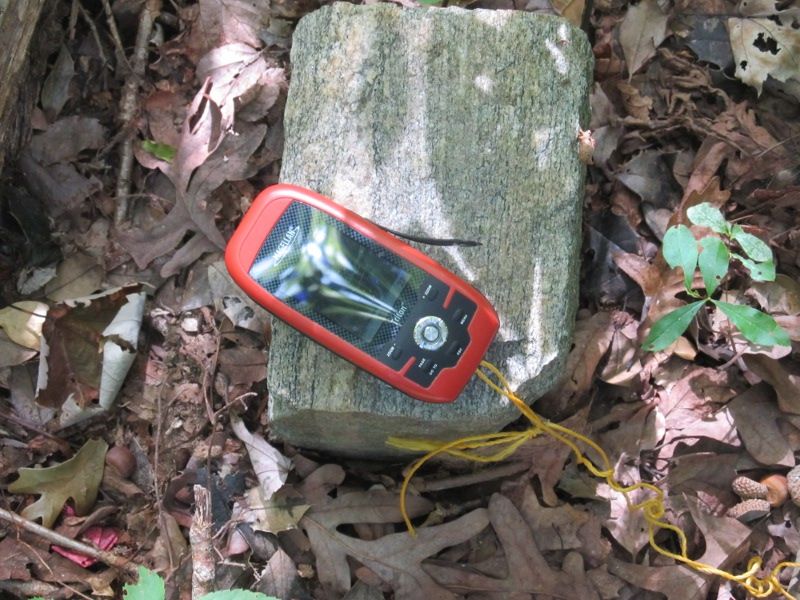
Side View

Good day down south.No Spanish Moss or cypress but no Far Aints neither.

I thne went to check out another stone in the area knowing the short way in is across private property.I was hopin the woods would be open and they wildly exceeded my hopes.They were so open I could see 200 yeards no problem except the problem was I would be tresspassing and was easily visible from a house though not the property owner.Alas I had wore blue jeans and a light grey shirt.I felt nekked without my camo and told myself I"m 51 years old and need to start obeying the law especially since I can't run very fast or far anymore.I will tackle this stone later legally but will need to bushwack more then a mile to get to it legally.I have laready found stones where I"ll have to wack through and their very nice woods indeed so it should be fun.I then left Cumberland County and headed for Cape May,whistling an old Al Alberts song along the way.I headed for a stone I knew was very close to a road and also close to someones house.I had Google Sightseed along the highway and could see on Google the very sign I knew this stone had to be at the base of.It also appeared to be far enough away from the house that I could hopefully avoid interrogation and possible torture.I pulled over and could look back and see the sign in reality just like I did in cyber space.I stepped out of the truck and then I could see over a blocking briar and there was this beauty.Fully hip high so I named it the "Hip High" stone

There is another stone along this line listed on the deed as a LARGE stone but it is over a mile through the swamp.I could get to it easily from the other side but folks tend to get irritated when you walk through their yards so this will be another long hike.Maybe I"ll do both long hikes the same day.In any case I then headed for the stone I could not get to already related next to someones back yard fence.I knew it was close but not that close or I wouldn't have bothered.I then crossed the street where I had parked and walked through a flock of very disinterested turkeys,they barely moved to let me through.I then found this baby after looking around for maybe a minute.The NC sign on the big tree it's next to helped.

I then headed much further south.I was expecting to see cypress knees and spanish moss,I was almost in Cape May itself.I headed into a small but gorgeous patch of NC woods and 700 ft back in along the back side of the property where I found no signs,no ribbon or no clues at all which was really weird for a property that was supposedly surveyed a couple months ago.First thing I found was this big mushroom,awaiting ID by my mushroom eating friend but I do believe this to be edible,I think it's Hen of the Wo0ds but not sure.I attached the photo since i didn't photobucket this one. I then turned around to start looking for the stone and it was ten feet behind me,spot on with my coord.Here are two pics of it.Nice sqare one.The Mr. Square " stone
Top View

Side View

Good day down south.No Spanish Moss or cypress but no Far Aints neither.
Attachments
The brotherton Reservation begins at a pine knot on the west side of Atsion Road. Like Al, I never knew what a pine knot was. I thought maybe it was the hole in the trunk where a branch once was. I know the area around the hole is very hard and the last part of the trunk to rot. I have heard of putting a pine knot in the fireplace to start a fire, now I know why.
While in Blackman (1880: 185), I found this reference to pine knots that reminded me of your post! She's talking about the first European settlers of Egg Harbor (early eighteenth century), a territorial designation that included Little Egg Harbor.
At this stage of time the farmers had plenty of fire wood and a stout ox team to haul it home, and it was the custom with them to cut down large oak or pine trees, and then cut them up into what they denominated back-logs. These logs were three or four feet long and often two or three feet in diameter, and when wanted to burn, the kitchen furniture was moved back and huddled together in another part of the room so as to allow ample room for the ingress of the back-logs. The big logs were rolled up and the monster logs carried or rolled into the house, and placed one at a time into the fire place. There were usually three sizes of back-logs, the largest in diameter forming the foundation, then the second in size was placed on the first, and then the third and smallest log on top; this the first great feat accomplished, the fire builder laid three or four splintered pitch pine knots on the coals, which had been placed against the base logs, then a small log (called a fore-stick) was laid on the strong bars of iron called the and-irons, thus forming a fore-stick, and then between the fore-stick and back logs was heaped up an armful or two of smaller, round or split wood; this done, the farmer soon had a pile which would last a considerable time, and suffice to warm and illuminate the ample room. Those who were blessed with such fires had but little use for candles or lamps, for the blazing pine knots and wood afforded sufficient light for all the work or reading going on in the apartment, and to be added to this first fire of the evening, there were an armful or two of nicely split pitch pine knots heaped up within the jams ready to be added to the fire whenever the light decreased. This split pine was put on, one piece at a time, and when that ceased to give the required light another was thrown on to keep up a successive blaze. For some generations the forests were full of those old pine knots, they being the relics of old pine trees that had fallen, and all except the knots had decayed; but the pine knots would have lasted forever, if people had not gathered and burnt them. At this time, a real old-fashioned pine knot is a rare sight.
According to Blackman old growth pine knots were incredibly decay resistant, apparently without modern analog.
1880. Blackman L. History of Little Egg Harbor Township, Burlington County, N.J., From its First Settlement to the Present Time. In Order of the Society [of the Surveyors; Association]. Proceedings, Constitution, By-Laws, Lists of Members, &c., of the Surveyors’ Association of West New Jersey. With Historical and Biographical Sketches Relating to New Jersey. Camden, NJ: S. Chew. pp. 173–400.
S-M
S-M,
very interesting, wasn't Egg Harbor called New Germany at one time? Maybe started as New Germany?
Don
very interesting, wasn't Egg Harbor called New Germany at one time? Maybe started as New Germany?
Don
This is the old, old Egg Harbor that was referring to a region way before Egg Harbor City was founded. Its bounds covered southern Ocean and eastern Atlantic Counties. The first ethnic enclave of New Germany or Germantown or Woolyfield (c.1848) encompassed Folsom and Newtonville along the western fringe of the Weymouth tract. About Egg Harbor Historian Issac Mickle (1845: 82) wrote:
Like Mickle, I too in my gut believe that there was an actual settlement of Egg Harbor. Early "Egg Harbor" trails seem to be headed towards Clarks Landing and Leeds Point. I like the former. There are many forgotten places throughout the Pines just waiting to be rediscovered!
BTW, this work by Mickle and others I cite can now be found online.
S-M
On Great Egg Harbor Bay, in Gloucester county, according to Scott, there was formerly a town called Egg Harbor, the inhabitants of which exported large quantities of pine. As this writer lived in Philadelphia, and compiled his work with a great deal of care, we have no doubt there was a village of this name; but where it stood or into what it has been changed we are unable to tell. Such, such are the works of time!
Mickle, I., 1845. Reminiscences of Old Gloucester or Incidents in the History of the Counties of Gloucester, Atlantic and Camden, New Jersey. Philadelphia: Townsend Ward. 170 pp. (1968 reprint, Gloucester County Historical Society).
Mickle, I., 1845. Reminiscences of Old Gloucester or Incidents in the History of the Counties of Gloucester, Atlantic and Camden, New Jersey. Philadelphia: Townsend Ward. 170 pp. (1968 reprint, Gloucester County Historical Society).
Like Mickle, I too in my gut believe that there was an actual settlement of Egg Harbor. Early "Egg Harbor" trails seem to be headed towards Clarks Landing and Leeds Point. I like the former. There are many forgotten places throughout the Pines just waiting to be rediscovered!
BTW, this work by Mickle and others I cite can now be found online.
S-M
I think I have seen pine knots now that I have read this description.Dead pines that have weathered away while still standing to a tall spindly spire of pitch impregnated fatwood that is great for starting fires.There are pine knots in the woods today again!
Spung-Man: wouldn't you have the right to sue in state Superior Court or in District Federal Court? Seems to me that the Pinelands Commission counsel is entitled to his opinion but I can't believe he's "the end of the line". Maybe some other interested parties might want to join you?
Guess who's back on my property today?
I need some big ole survey stones...
S-M
Or a steel gate.
Teegate,
A railroad official offered to construct such a barrier, but I thought it unfair to punish others by blocking road access just because of the stupid actions of a rogue entity (my municipality). Neighbors have had a right to enjoy the woods via an adjacent ROW road as they have for over 100 years. That tradition stands even though gating my land would best serve my own self interest. I refuse to post the land, as I’m only borrowing it for a short time anyway. It is the mismanaged, unprincipled, even illicit redevelopment of Pinelands Villages that is not welcomed, not the people passing through. Does the dilemma sound familiar?
S-M
Guy and I hit the woods today for a couple of long hikes each to a single stone plus we visited a couple of stones I had found previously but Guy had not seen.The first stone we actually found today borders Bayside prison property on one side and State land on the other. The plot was right on the money and the stone was festooned with ribbons and two wooden stakes with one written in magic marker STONE FOUND. We scraped away some leaves and sure nuff there it was.
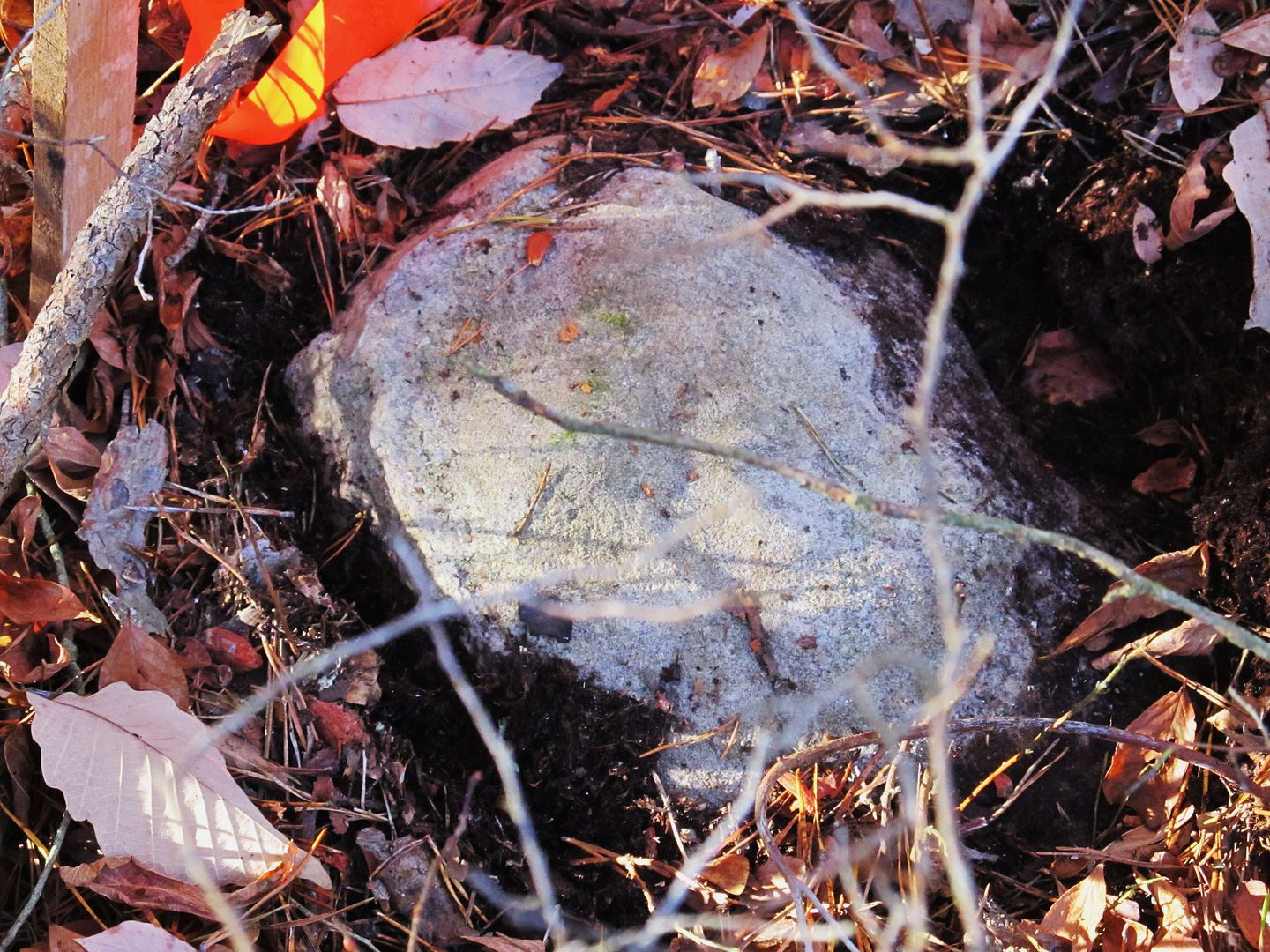
It was over a mile each way to get to this stone legal and galdly we found a trail that covered about half that distance.It could have been a shorter walk but we did this one legal and avoided tresspassing across gun club property.We were really too close to the prison to be gettin busted for anything.At least Guy was wearing a florescent orange beanie but I had no prison garb at all.
We then beat feet back to the car and headed even further south into Middle Twp cape may county and too another 1.3 mile bushwack.The middle third of this bushwack was quite tough with numerous downed large pine smothered with Smilax but the last third of the trip was quite a nice open beech/ holly forest.As we approached the stone location at the end of a 1.5 hour bushwack I began to dispair because I seen a road right at the stone location.I turned toward the road and started to panic that it was gone.The deed said it was a LARGE stone. This stone was on the same line as the second pic in post 103 on this thread and that was quite a large stone so I had high hopes for this one.As I stumbled into the road Guy said here it is and it's BIG! I looked left and there covered with fallen pine branches was this.
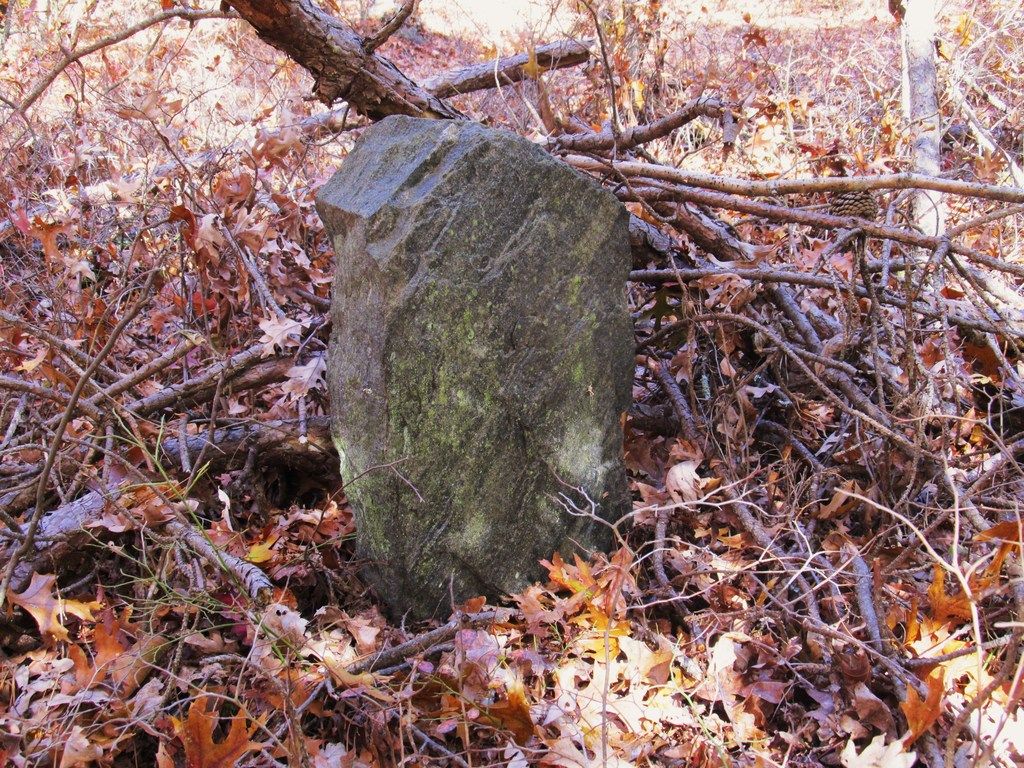
Quite an awesome stone. And another pic for size.
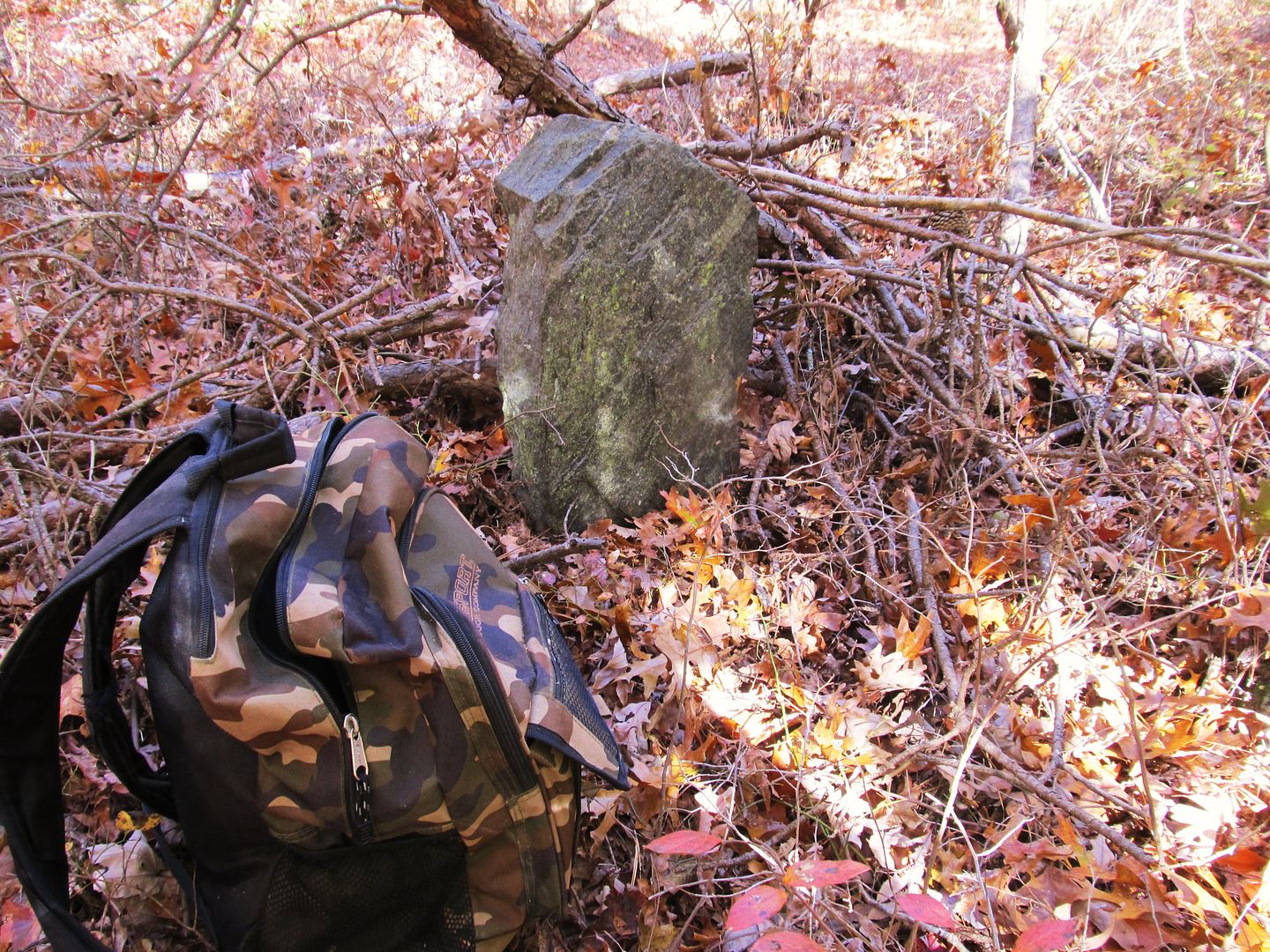
We then sat and chilled out while I et my sammich and punkin pie and then had to beat feet oddly enough another 1.3 mi back to the vehicles.Only took about 65 minutes going back.Perhaps this had something to do with the rotation of the earth and gravitational time dilation? I"ll have to question Doc on this one.All in all a very hot but nice day.Only two stones but very nice walks.

It was over a mile each way to get to this stone legal and galdly we found a trail that covered about half that distance.It could have been a shorter walk but we did this one legal and avoided tresspassing across gun club property.We were really too close to the prison to be gettin busted for anything.At least Guy was wearing a florescent orange beanie but I had no prison garb at all.
We then beat feet back to the car and headed even further south into Middle Twp cape may county and too another 1.3 mile bushwack.The middle third of this bushwack was quite tough with numerous downed large pine smothered with Smilax but the last third of the trip was quite a nice open beech/ holly forest.As we approached the stone location at the end of a 1.5 hour bushwack I began to dispair because I seen a road right at the stone location.I turned toward the road and started to panic that it was gone.The deed said it was a LARGE stone. This stone was on the same line as the second pic in post 103 on this thread and that was quite a large stone so I had high hopes for this one.As I stumbled into the road Guy said here it is and it's BIG! I looked left and there covered with fallen pine branches was this.

Quite an awesome stone. And another pic for size.

We then sat and chilled out while I et my sammich and punkin pie and then had to beat feet oddly enough another 1.3 mi back to the vehicles.Only took about 65 minutes going back.Perhaps this had something to do with the rotation of the earth and gravitational time dilation? I"ll have to question Doc on this one.All in all a very hot but nice day.Only two stones but very nice walks.
It was nice seeing you again Al. Looking forward to some good finds in December.
We started early this morning. Here is Route 55 just at sunrise this morning (6:31AM).

Al showed me a really nice stone he had found earlier, and while looking at it we noticed that some surveyor did not have much respect for it. The stone does not have much time left.

Guy
We started early this morning. Here is Route 55 just at sunrise this morning (6:31AM).

Al showed me a really nice stone he had found earlier, and while looking at it we noticed that some surveyor did not have much respect for it. The stone does not have much time left.

Guy
I wonder if there is some kind of super permanent carpenters glue or cement you could squeeze into that crack,other wise it's going to frost wedge and pop right apart one of these winters soon.
By the way this cracked stone is the same as the second photo in post 103 of this thread.
By the way this cracked stone is the same as the second photo in post 103 of this thread.
Another day stone hunting in Cumberland County. We started out looking for a corner to the old Burcham Farm on the maurice River.The farm is the only still operating farm reclaimed from the river by dyking over 200 years ago.Until a few years ago it was owned by Burchams who muy friend in the pics mother was a Burcham and cousins to the latest owners.Was originally bought by his gr gr granddad Amaziah Burcham around 1860.The property we were on is now Nature Conservancy but used to belong to Amaziah and an old deed I found showed the stone on his NE Corner.The stone is no longer there but we found the corner marked by two signs on a very large pine and then a small yellow stake in the ground.I decided to follow the Scott Line surveyed i believe in 1740 from the stone down to the maurice River hoping that even though the deed mentioned no stone there that there might be something.There was and what a beauty. Heres the river side of the monument.

The Landward side.
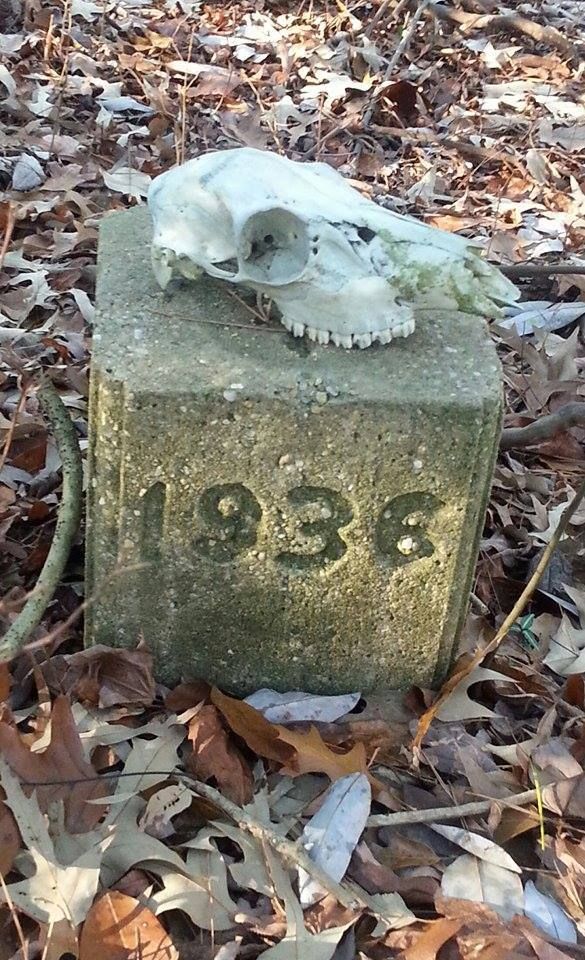
and the top

On the way out to this spot we stumbled upon a ruin.My buddy being in front found it and said a foundation.Upon walking up to it I said no, a sawmill! and here are a few pics of the sawmill.
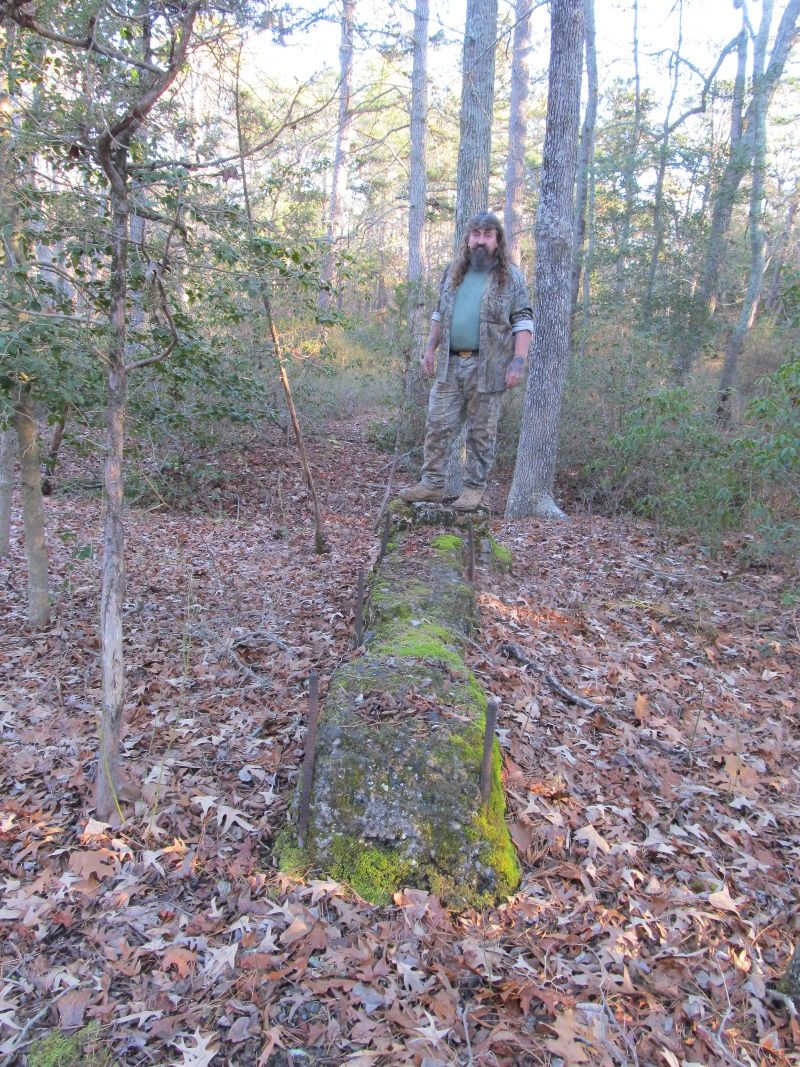
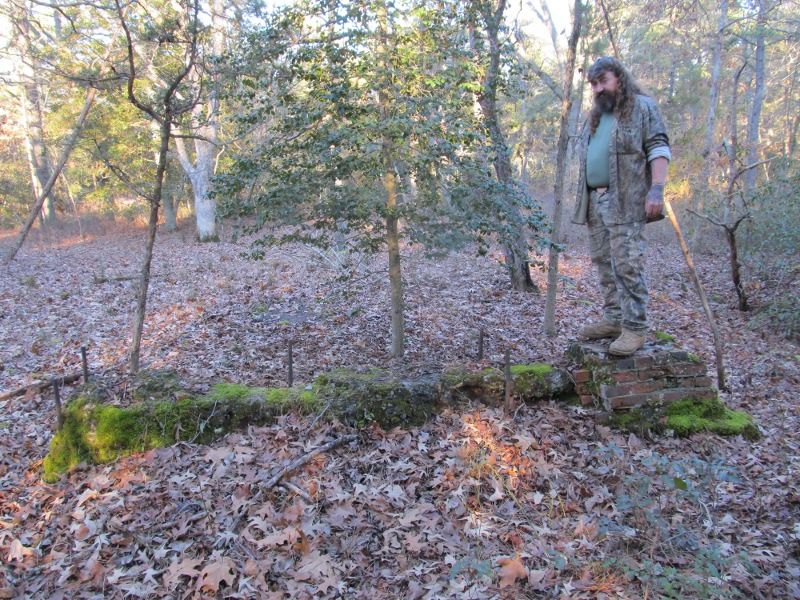
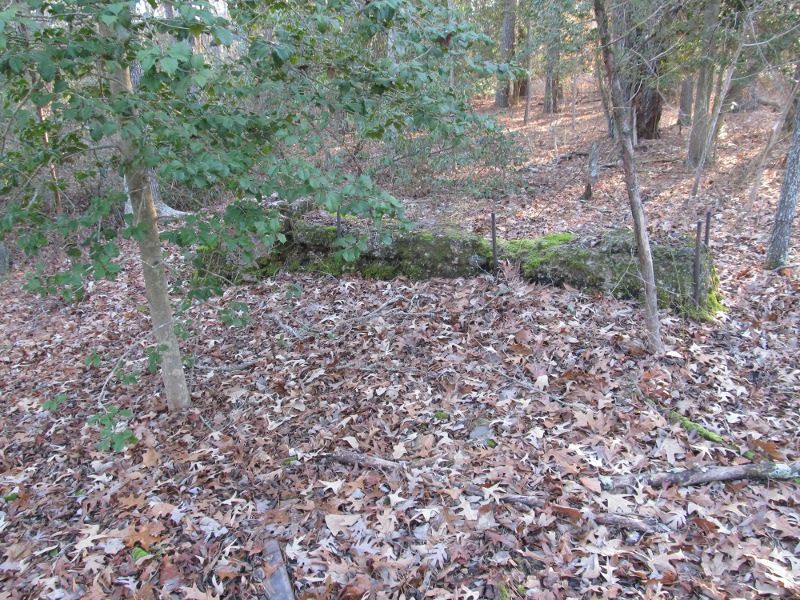
and some sort of fixture.My friend said it was brass.
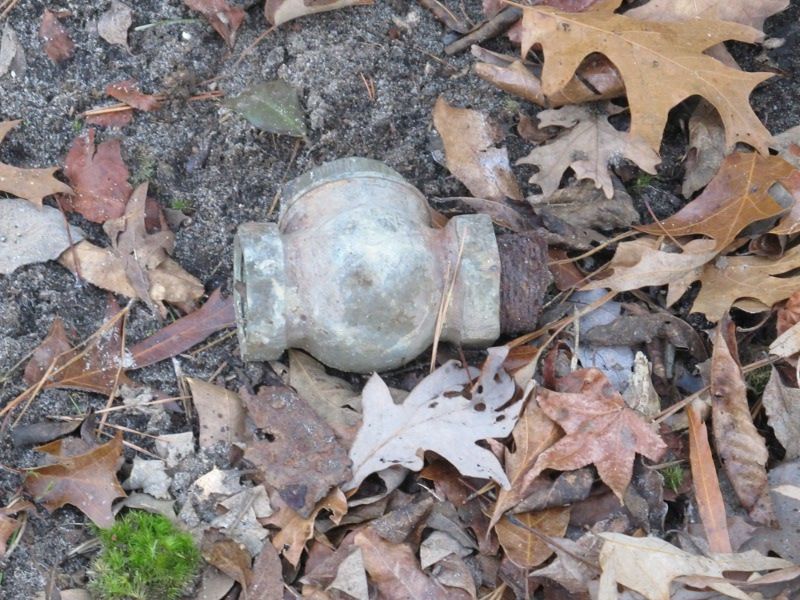
and I know not what. A leaf spring?
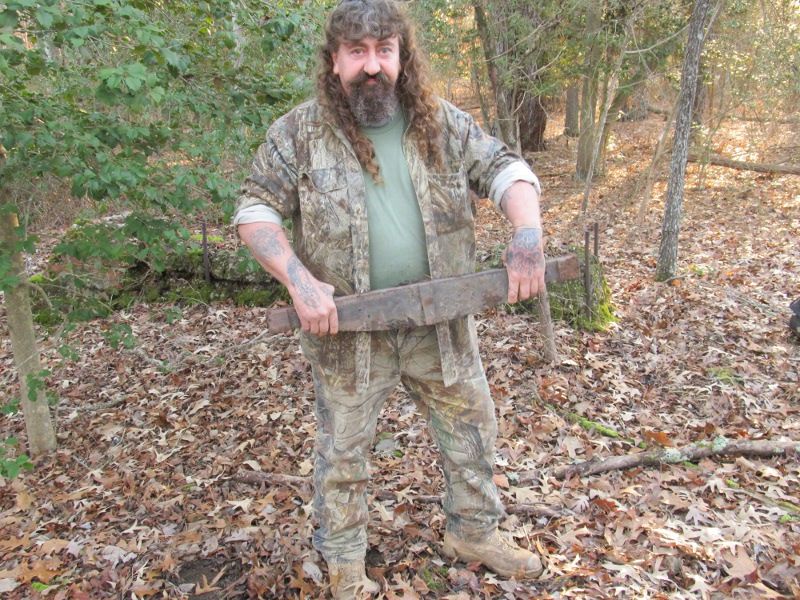
Then later on out to Dix WMA I took two pics of what looks to be the foundation to a very small house?
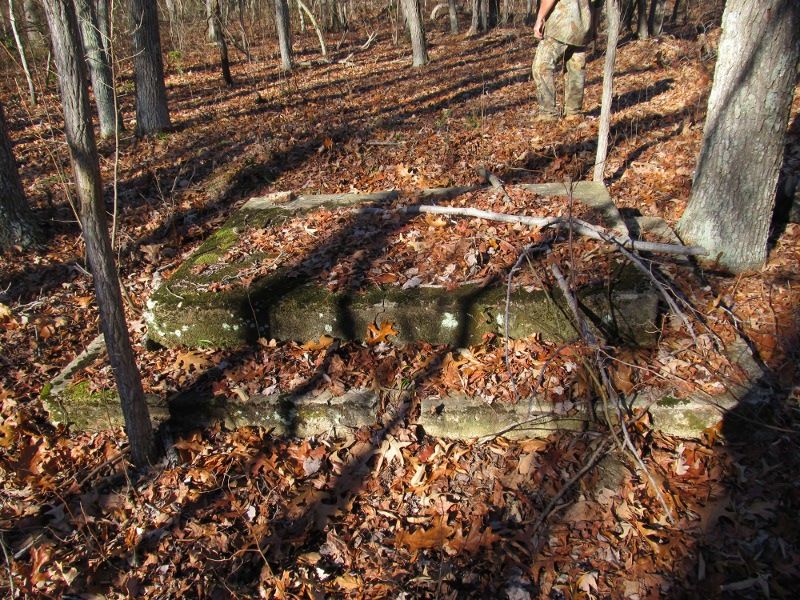

and then a stone my friend had found several weeks ago just mushroom hunting.He new what area it was in but not the exact spot so we spread out.Turns out I wandered into it and a nice stone it was? I know not what property it went to but I had previously found some very nice stones across the road from this one by plotting online deeds.
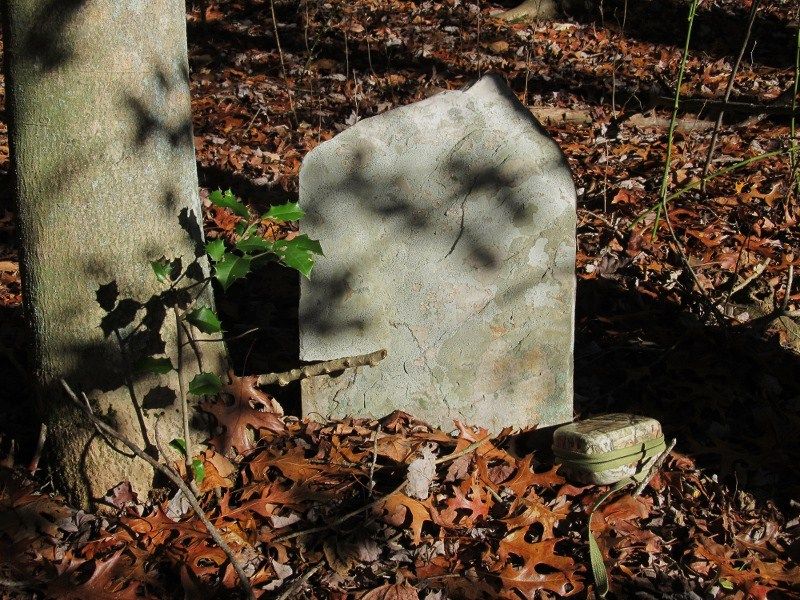
Some nice big patches of dried up Polypores is all we found but to my surprise there are edible shrooms in the woods all winter.Primarily Tooth Shrooms and Oysters.

The Landward side.

and the top

On the way out to this spot we stumbled upon a ruin.My buddy being in front found it and said a foundation.Upon walking up to it I said no, a sawmill! and here are a few pics of the sawmill.



and some sort of fixture.My friend said it was brass.

and I know not what. A leaf spring?

Then later on out to Dix WMA I took two pics of what looks to be the foundation to a very small house?


and then a stone my friend had found several weeks ago just mushroom hunting.He new what area it was in but not the exact spot so we spread out.Turns out I wandered into it and a nice stone it was? I know not what property it went to but I had previously found some very nice stones across the road from this one by plotting online deeds.

Some nice big patches of dried up Polypores is all we found but to my surprise there are edible shrooms in the woods all winter.Primarily Tooth Shrooms and Oysters.
Last edited:
You need to fix the bottom photo.
You friend looks like he could be your brother
A very good day. Thanks for posting!
You friend looks like he could be your brother

A very good day. Thanks for posting!


